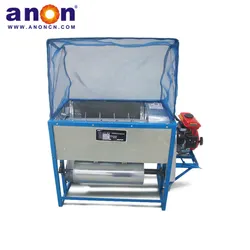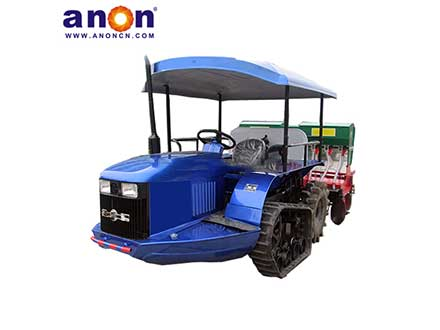Polished rice, also known as refined rice. It has a smooth and translucent appearance. You can find it easily in supermarkets.
In this article, you will know what polished rice is, the polishing process, and the polishing machines. With our own factory and years of experience, we are here to guide you through it all.
Ready to dive into the world? Let’s get started!

What is Polished Rice
Polished rice is a staple food widely consumed in daily life. It serves as a primary ingredient in popular dishes like fried rice, congee, and many others. Polished rice undergoes a series of steps, including cleaning, husking, milling, and polishing. After polishing, the rice becomes smoother and fairer in appearance.
Benefits of Polished Rice
Polished rice is widely popular due to its numerous benefits. Here are some key advantages:
- Enhanced Appearance: Through steps like husking, milling, and polishing, the rice sheds its outer skin and bran layer. This process results in a whiter and more delicate grain.
- Improved Shelf Life: After processing, the rice has removed the outer skin and germ of the rice. The outer skin and embryo are prone to moisture and mold, which is one of the main reasons for rice spoilage. In addition, during the processing, the moisture content in the rice decreases, which also extends the shelf life of the rice.
- Higher Commercial Value: Polished rice is easier to cook and takes less time during the cooking process. This is more convenient for many people, especially when they are busy with work. Moreover, it is more easily digested and absorbed by the human body compared to brown rice.
Processing Process of Polished Rice
You have learned about polished rice and its significance. Now, let’s delve into the detailed polishing process:
Cleaning
Firstly, the uncleaned rice is sent to the cleaning equipment. Cleaning rice is to minimize contamination and damage during subsequent processing. This device uses physical vibration or airflow to separate large particle impurities such as stones and straw from rice. Then, the rice goes through finer cleaning machines to get rid of smaller impurities and any leftover husks. These machines have screens of different sizes that can be changed to make sure all the impurities are removed completely.
Husking
After cleaning, the rice is ready to be dehulled in the husker. Inside the husker, a fast-spinning rubber roller removes the outer husk from the rice. As the rice moves through the cylinder and rubs against the roller, the husk falls away. Once dehulled, the rice and husks are sent to separation equipment where vibrations or airflow separate them. The husks are removed while the rice moves downwards for further processing.

Milling
The rice is transported into the milling machine by conveyors. Inside the milling machine, an electric motor drives the rollers to spin quickly through a transmission device. As the rice enters the milling chamber, the fast-spinning action grinds off the outer layer and embryo of the rice grains. After milling, the rice changed from brown rice to white grains.
Polishing
After milling, the rice turns white, but a layer of bran powder covers its surface. To improve its appearance, the rice is polished. Inside the polishing machine, rubber rollers rotate while spraying a fine mist of water onto the rice. As the rice undergoes high-speed rotation and friction, the defects and bran powder on its surface are removed. The water mist gelatinizes and crystallizes under specific pressure and temperature, giving the rice a clear and transparent appearance.
Polishing Machine
Polishing machines are widely used in the rice processing industry. When processing polished rice, the role of the polishing machine is particularly important. They enhance the rice’s appearance, increase its value, and make it more competitive in the market. These machines typically consist of polishing rollers, transmission devices, screen barrels.
Installation of Polishing Machines
Once you have purchased a polishing machine, the installation process begins. Start by selecting a flat surface and securing the machine’s base firmly to ensure stability. Next, install the air network, water pipes, and adjust the voltage as needed. Then, proceed to install the polishing roller and other components, tightening the screws securely. Once everything is in place, connect the power and perform equipment debugging. If all functions properly, you are ready to begin using the polishing machine.
Operation of Polishing Machines
After installation, you can start using the polishing machine. Firstly, according to the processing needs, set the working parameters of the polishing machine. Usually including speed, polishing time, etc. Then start the polishing machine. During the processing, it is necessary to closely observe the operation of the polishing machine. You need to pay attention to any abnormal sounds or vibrations, and adjust and handle them in a timely manner. After the processing time has reached, turn off the power and wait for the machine to completely stop running.

Polished Rice VS. Brown Rice
Here are the main differences between polished and brown rice:
Appearance: The polished rice grains have a fair and translucent color. The brown rice grains have a slightly rough appearance and a yellow color.
Texture: Polished rice has a delicate texture and a soft taste, whereas brown rice tends to have a slightly rough texture and a firmer taste.
Nutrition: Polished rice removes not only the bran layer, but also some of the vitamins, minerals, and dietary fiber contained in it. Therefore, the nutritional value of polishing is relatively low. The brown rice retains the rice bran layer and retains more nutrients.
Storage: Due to the absence of the bran layer, polished rice typically has a longer shelf life compared to brown rice.
Conclusion
In this article, you have learned a lot about polished rice, including how it is made and the machines used to polish it.
If you are hungry for more knowledge or have any questions, feel free to reach out to us at ANON or drop a comment below! We are here to provide you with further insights and valuable information!




